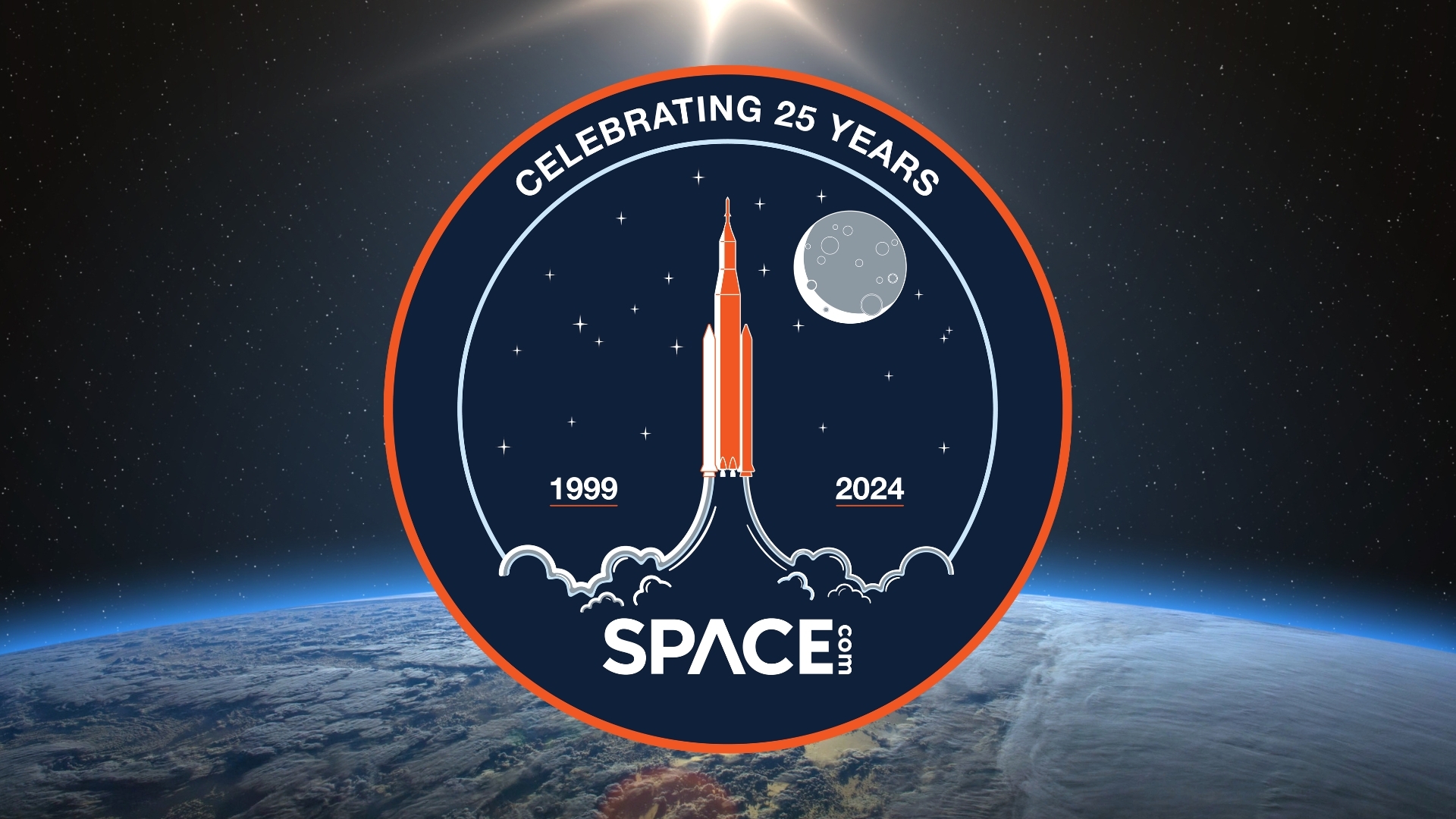25 years of Space.com: Space exploration and astronomy in the 21st century (special report)
We'll be updating this hub with all our special features throughout the week.

On July 20, 1999, Space.com opened its doors to chronicle humanity's ongoing mission to understand the cosmos and explore the final frontier.
A lot has happened in astronomy and spaceflight over the last 25 years. To celebrate our anniversary, Space.com is running a weeklong special report on some of our favorite topics of space exploration to understand how it's changed and what lies ahead for the next 25 years.
Read on for our Space.com 25th anniversary features over the week and please join us for our virtual panel "The Next 25 Years of Space Exploration - To the Moon, Mars and Beyond on YouTube, where we discuss what awaits us all in space!
Monday, July 15: How spaceflight has changed
Thank you for 25 amazing years of Space.com: A letter from the editor
Space.com's Editor-in-Chief Tariq Malik shares a special message for readers to mark a quarter century of space news and reporting.
SpaceX, the rise of China and more: How spaceflight has changed since 1999
Space travel has changed from government-driven missions to a dynamic, commercially driven frontier over the past 25 years, driven by advancements in technology and the rise of private companies.
Cosmic curiosity is climbing, thanks to social media
A new view of the Earth from space? Check Instagram. Rocket launch videos? Try TikTok. How social media has changed the way we get information this century.
Tuesday, July 16: Mega-telescopes & exoplanets
How the last 25 years led to the rise of mega-telescopes
From exoplanets to the galaxies in the early universe, there's little that large telescopes on Earth can't see. The past quarter of a century in astronomy has been dominated by large telescopes — but they are about to be usurped by some even larger ones.
Where is Earth 2.0: Rise of the exoplanets
It's the holy grail of planet hunters, an exoplanet that is so similar to our own planet Earth that it could be a twin that holds life. But after more than 25 years, where is it?
Wednesday, July 17: Virtual panel on Space.com
25th Anniversary Virtual Panel: The Next 25 Years of Space Exploration - To the Moon, Mars and Beyond
Join Space.com as we celebrate our 25th anniversary by looking to the future of humanity's reach into the cosmos with the live virtual panel on July 17 at 12 p.m. EDT (1600 GMT, or 0900 PT on July 18). Speaking on our panel will be astrophysicist and exoplanet hunter Sara Seager, astronaut and Sierra Space Chief Medical Officer Tom Marshburn and Carnegie Mellon Observatories director John Mulchaey.
Breaking space news, the latest updates on rocket launches, skywatching events and more!
How our understanding of black holes has evolved
One of the greatest moments of black hole science in the last 25 years may be the first actual photo of these elusive cosmic beasts, but it's not the only one. Here's how black holes have evolved as scientists built better tools to hunt them down.
25 night sky targets - can you catch them all?
The night sky can be a wonderful place and there are some great objects to see every time you look up. Here's a handy guide to 25 stars, planets and other objects to look for.
Thursday, July 18: Astronomy finds, private space stations
The greatest astronomical discoveries of the last 25 years
Astronomers have made great strides as they studied planets and the cosmos over the last quarter century. Here's a look at some of their greatest feats.
The rise of private space stations
Once the realm of science fiction, private and commercial space stations now seem a near certainty as NASA embraces a commercial model for its orbital needs. But what can these new private destinations in space offer?
Friday, July 19: The next 25 years
The next 25 years of space exploration: Here's what's coming
As Space.com looks ahead to the next 25 years of space exploration, we've reached out to experts to ask what could actually happen by 2049. We humans finally reach Mars? Will we have a base on the moon at last?
In a way, Space.com and the dark universe grew up together
Dark matter and dark energy may have long been elusive to astronomers, the cosmic white whale to their Ahab, but over the last 25 years scientists have crept ever close to illuminating their invisible quarry.
Saturday, July 20: Happy Birthday, Space.com!
Happy Birthday, Space.com!
Join us for a short video celebration of Space.com as we look ahead to another amazing 25 years bringing you the latest and greatest space news, videos, photos and more.

Tariq is the award-winning Editor-in-Chief of Space.com and joined the team in 2001. He covers human spaceflight, as well as skywatching and entertainment. He became Space.com's Editor-in-Chief in 2019. Before joining Space.com, Tariq was a staff reporter for The Los Angeles Times covering education and city beats in La Habra, Fullerton and Huntington Beach. He's a recipient of the 2022 Harry Kolcum Award for excellence in space reporting and the 2025 Space Pioneer Award from the National Space Society. He is an Eagle Scout and Space Camp alum with journalism degrees from the USC and NYU. You can find Tariq at Space.com and as the co-host to the This Week In Space podcast on the TWiT network. To see his latest project, you can follow Tariq on Twitter @tariqjmalik.
